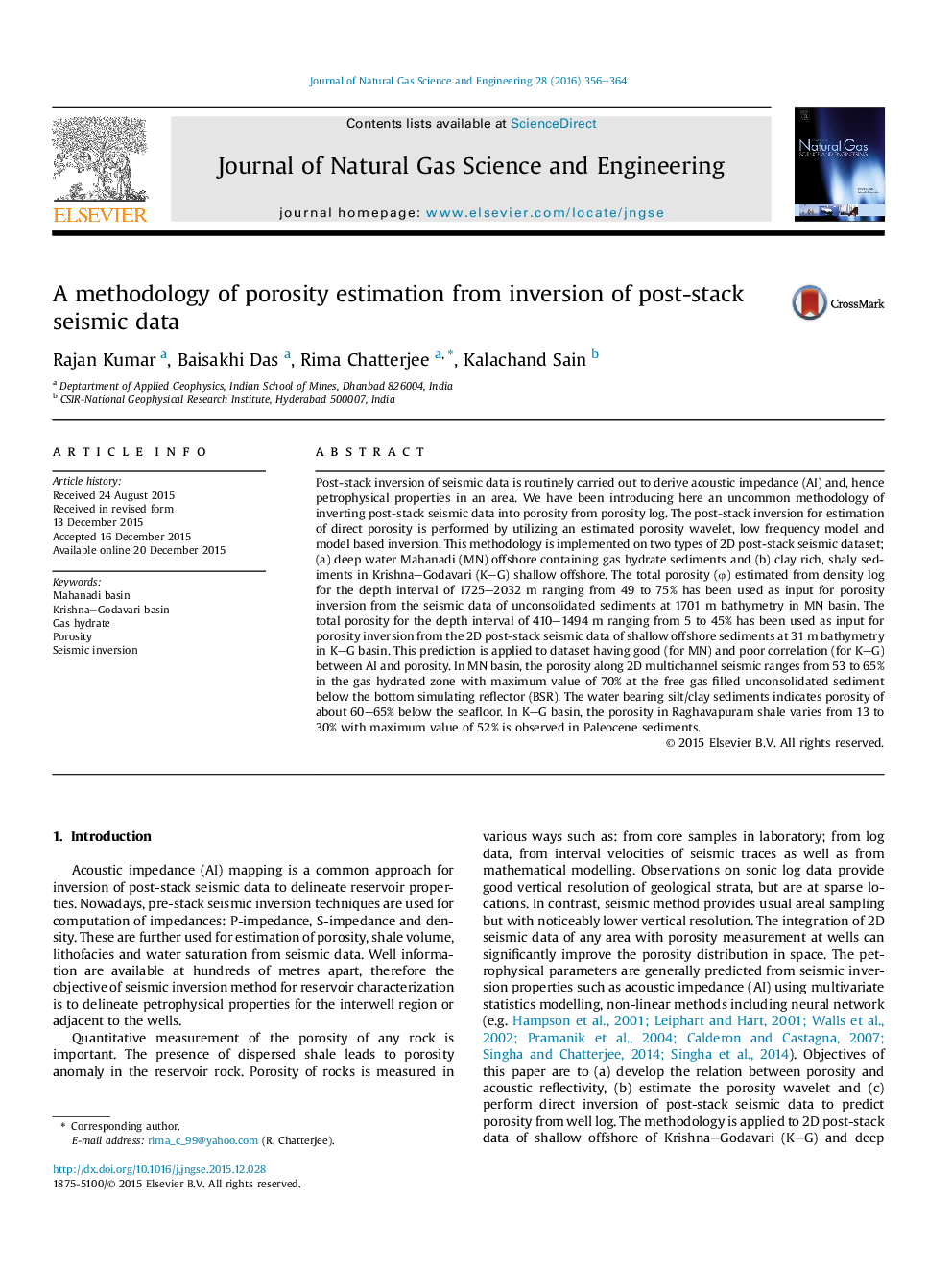| کد مقاله | کد نشریه | سال انتشار | مقاله انگلیسی | نسخه تمام متن |
|---|---|---|---|---|
| 1757295 | 1523013 | 2016 | 9 صفحه PDF | دانلود رایگان |
عنوان انگلیسی مقاله ISI
A methodology of porosity estimation from inversion of post-stack seismic data
ترجمه فارسی عنوان
یک روش تخمین تخلخل از معکوس اطلاعات لرزه ای پس از پشته
دانلود مقاله + سفارش ترجمه
دانلود مقاله ISI انگلیسی
رایگان برای ایرانیان
کلمات کلیدی
حوضه مهنادی، حوضه کریشنا غدیری، هیدرات گاز، قطر بینی، معکوس لرزه ای،
موضوعات مرتبط
مهندسی و علوم پایه
علوم زمین و سیارات
علوم زمین و سیاره ای (عمومی)
چکیده انگلیسی
Post-stack inversion of seismic data is routinely carried out to derive acoustic impedance (AI) and, hence petrophysical properties in an area. We have been introducing here an uncommon methodology of inverting post-stack seismic data into porosity from porosity log. The post-stack inversion for estimation of direct porosity is performed by utilizing an estimated porosity wavelet, low frequency model and model based inversion. This methodology is implemented on two types of 2D post-stack seismic dataset; (a) deep water Mahanadi (MN) offshore containing gas hydrate sediments and (b) clay rich, shaly sediments in Krishna-Godavari (K-G) shallow offshore. The total porosity (Ï) estimated from density log for the depth interval of 1725-2032Â m ranging from 49 to 75% has been used as input for porosity inversion from the seismic data of unconsolidated sediments at 1701Â m bathymetry in MN basin. The total porosity for the depth interval of 410-1494Â m ranging from 5 to 45% has been used as input for porosity inversion from the 2D post-stack seismic data of shallow offshore sediments at 31Â m bathymetry in K-G basin. This prediction is applied to dataset having good (for MN) and poor correlation (for K-G) between AI and porosity. In MN basin, the porosity along 2D multichannel seismic ranges from 53 to 65% in the gas hydrated zone with maximum value of 70% at the free gas filled unconsolidated sediment below the bottom simulating reflector (BSR). The water bearing silt/clay sediments indicates porosity of about 60-65% below the seafloor. In K-G basin, the porosity in Raghavapuram shale varies from 13 to 30% with maximum value of 52% is observed in Paleocene sediments.
ناشر
Database: Elsevier - ScienceDirect (ساینس دایرکت)
Journal: Journal of Natural Gas Science and Engineering - Volume 28, January 2016, Pages 356-364
Journal: Journal of Natural Gas Science and Engineering - Volume 28, January 2016, Pages 356-364
نویسندگان
Rajan Kumar, Baisakhi Das, Rima Chatterjee, Kalachand Sain,
